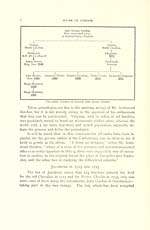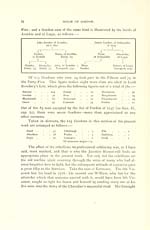New Spalding Club > House of Gordon > Gordons under arms
(61) Page li
Download files
Complete book:
Individual page:
Thumbnail gallery: Grid view | List view

THE MAKING OF THE MUSTER. U
by the present writer, has been made up from a variety of sources.
The most elaborate of these is : —
A List of Persons Concerned in the Rebellion, transmitted to the Commissioners of Excise
by the several supervisors in Scotland, in obedience to a general letter of the yth May, 1746,
and a supplementary list with evidences to prove the same : with a preface by the Earl of
Rosebery and annotations by the Rev. Walter Macleod. Edinburgh, Scottish History Society,
1S90. [It should be explained that this date 7th May, 1746, has been adopted as the date of the
whereabouts of the men involved, for we do not know when every return was actually made.]
A large mass of valuable and little-known" information was discovered
at the Record Office by Mrs. Skelton, and additional facts have been
found in a variety of sources, as detailed in the authorities quoted.
The Jacobite risings afforded the last big opportunity for the
Highlanders in general and the Gordons in particular to exhibit the old
individualisms which had made the art of governing them so difficult,
and the warlike feelings they aroused afterwards proved of immense value
to professional soldiering, especially as regards officers.
The pusillanimous attitude of the ist and and Dukes of Gordon,
impressed on posterity by some scathing ballads, has tended to convey
the impression that the Gordons did not readily rise to rebellion. The
ennobled families certainly did not make the same move. The ist Duke
and his son, Lord Huntly, were never quite able to make up their minds
how to act ; the Earl of Aboyne was a minor: the Earl of Aberdeen
took no action : the Viscount of Kenmure rose, and lost his head on
Tower Green in consequence ; while the Earl of Sutherland, who had
already begun to withdraw from the ducal influence, made the family
feud wider than ever by opposing the Jacobites vigorously and levelling
his forces against the Duke. But many of the lairds threw themselves
into the struggle quite recklessly, largely, I think, at the instigation of
John Gordon, of Glenbucket, who was plainly disgusted with the luke-
warmness of the Duke to whom he acted as factor. Families stampeded
in closely related groups — an aspect of Jacobitism which has never
been sufficiently investigated. For instance, Moir of Stoneywood and
his brother Moir of Lonmay, who were both excepted from the Pardon
of 1747, were respectively the brothers-in-law of Fullerton of Dudwick
and Byres of Tonley, who were similarly excepted, while Lonmay's
son-in-law. Gumming of Pittulie, met a similar fate. Another related
group, consisting of Thomson of Faichfield, Ogilvie of Auchiries, Forbes
of Pitsligo, and Irvine of Drum, were all in the same boat in the Forty-
by the present writer, has been made up from a variety of sources.
The most elaborate of these is : —
A List of Persons Concerned in the Rebellion, transmitted to the Commissioners of Excise
by the several supervisors in Scotland, in obedience to a general letter of the yth May, 1746,
and a supplementary list with evidences to prove the same : with a preface by the Earl of
Rosebery and annotations by the Rev. Walter Macleod. Edinburgh, Scottish History Society,
1S90. [It should be explained that this date 7th May, 1746, has been adopted as the date of the
whereabouts of the men involved, for we do not know when every return was actually made.]
A large mass of valuable and little-known" information was discovered
at the Record Office by Mrs. Skelton, and additional facts have been
found in a variety of sources, as detailed in the authorities quoted.
The Jacobite risings afforded the last big opportunity for the
Highlanders in general and the Gordons in particular to exhibit the old
individualisms which had made the art of governing them so difficult,
and the warlike feelings they aroused afterwards proved of immense value
to professional soldiering, especially as regards officers.
The pusillanimous attitude of the ist and and Dukes of Gordon,
impressed on posterity by some scathing ballads, has tended to convey
the impression that the Gordons did not readily rise to rebellion. The
ennobled families certainly did not make the same move. The ist Duke
and his son, Lord Huntly, were never quite able to make up their minds
how to act ; the Earl of Aboyne was a minor: the Earl of Aberdeen
took no action : the Viscount of Kenmure rose, and lost his head on
Tower Green in consequence ; while the Earl of Sutherland, who had
already begun to withdraw from the ducal influence, made the family
feud wider than ever by opposing the Jacobites vigorously and levelling
his forces against the Duke. But many of the lairds threw themselves
into the struggle quite recklessly, largely, I think, at the instigation of
John Gordon, of Glenbucket, who was plainly disgusted with the luke-
warmness of the Duke to whom he acted as factor. Families stampeded
in closely related groups — an aspect of Jacobitism which has never
been sufficiently investigated. For instance, Moir of Stoneywood and
his brother Moir of Lonmay, who were both excepted from the Pardon
of 1747, were respectively the brothers-in-law of Fullerton of Dudwick
and Byres of Tonley, who were similarly excepted, while Lonmay's
son-in-law. Gumming of Pittulie, met a similar fate. Another related
group, consisting of Thomson of Faichfield, Ogilvie of Auchiries, Forbes
of Pitsligo, and Irvine of Drum, were all in the same boat in the Forty-
Set display mode to: Large image | Transcription
Images and transcriptions on this page, including medium image downloads, may be used under the Creative Commons Attribution 4.0 International Licence unless otherwise stated. ![]()
| Publications by Scottish clubs > New Spalding Club > House of Gordon > Gordons under arms > (61) Page li |
|---|
| Permanent URL | https://digital.nls.uk/79781429 |
|---|
| Description | Volumes 47-53 are uniform with but not part of the club's series. |
|---|---|

